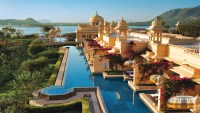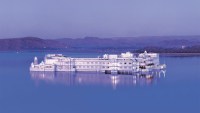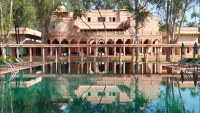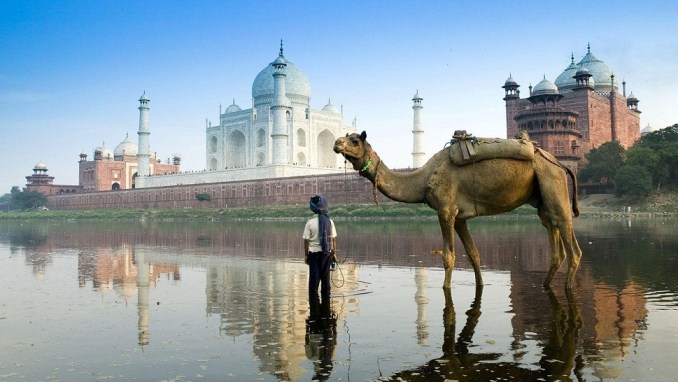India is a delightful destination to visit, offering a plethora of travel experiences. Stretching from the mighty peaks of the Himalayas in the north to the tropical beaches in the south, India’s expansive borders encompass an incredible range of contrasts, landscapes, cultures, and religions. The country is home to many UNESCO World Heritage sites, from the 7th wonder of the world Taj Mahal to majestic palaces and forts that were built hundreds of years ago, still standing upright to narrate the testimony of time of India’s rich culture and history. The nation also features vast wilderness areas, national parks and nature sanctuaries that are home to exciting wildlife, such as elephants, lions, and tigers.
Get the most out of your (luxury) trip to India with my travel guide. Find out more about:
- Best time to visit
- How to get there
- Travel requirements
- Getting around
- Inspiration, highlights, & travel tips
- Suggested itineraries
- Recommended luxury hotels (+ reviews)
BEST TIME TO VISIT
The best time to visit India is between October and March, when the weather is more likely to be warm, sunny, and dry. During this time, the north (which is the part of India that most travelers visit) offers clear blue skies, although December and January can be very cold and sometimes foggy. Increasing temperatures in April and May can result in excellent value trips, but you can expect high humidity and thunderstorms.
- Winter in India sets in around mid-December and lasts through the end of March. This is the coldest and driest season in the country, and considered the best period to visit India. Temperatures during the day are pleasant and comfortable, although often quite chilly at night in the north. Freezing temperatures can be experienced in India’s far north around the Himalaya region, although the mountain views are at their best because of crispy clear skies. In the south, it never gets cold.
- Summer, also called the pre-monsoon season, starts in April and goes on through mid-June. This is the hottest season in India, especially during the last weeks of the season. Many places experience daily temperatures exceeding 40° C (105° F). It stays cooler in the southern parts of the country, with temperatures reaching around 35° C (95° F), although it’s a lot more humid. In late May, signs of the approaching monsoon start appearing, with squally winds, high humidity, occasional thunderstorms, and dust storms.
- The monsoon rainy season lasts from mid-June to mid-October. The rains come in from the sea and start making their way up India’s west coast in early June. By mid-July, most of the country is covered in rain. India during the monsoon doesn’t receive rain all the time, although it usually rains for a heavy period every day, followed by pleasant sunshine. The weather gradually starts clearing again from most places in northwest India by October. Travel in India during the monsoon can be a real challenge and is best avoided.
- The post monsoon season – also referred to as the autumn season – is from mid-October to mid-December. This season comes with a lot of cloudlessness particularly for the northwest side. During this period, the temperature rises again and the weather can be a little unbearable due to the humidity in the air.
HOW TO GET THERE
India receives numerous international daily flights via its many international airports. Most travelers will enter India at one of its two biggest gateways for international visitors, New Delhi and Mumbai, though Kolkata, Bengaluru, and Chennai receive their fair share of international arrivals as well.
- Indira Gandhi International Airport (DEL) is the country’s largest airport and the main getaway to New Delhi and India. Click here for a list of airlines that offer direct flights to New Delhi.
- Chhatrapati Shivaji Maharaj International Airport (BOM) serves Mumbai, the financial and entertainment center of India. Click here for a list of airlines that offer direct flights to Mumbai.
- Kempegowda International Airport (BLR) is located Bangalore, the third most populous city in India. Click here for a list of airlines that offer direct flights to Bangalore.
- Chennai International Airport (MAA) is located on India’s southeast coast, near the metropolitan area of Chennai. Click here for a list of airlines that offer direct flights to Chennai.
- Netaji Subhas Chandra Bose International Airport (CCU) serves the Kolkata metropolitan area and is the main getaway to northeast India. Click here for a list of airlines that offer direct flights to Kolkota.
Before you buy a plane ticket, consider reading my tips & tricks for buying the cheapest plane ticket.
TRAVEL REQUIREMENTS
Requirements for entry into India differ from country to country, and are subject to change. Prior to departure, always check with your government and your nearest Indian embassy or consulate what documents you need for travel to Indian.
- You need a passport with at least six months validity to enter India.
- Generally, a visa is required to enter, exit or transit through India. India issues various types of visas, including e-visas. Make sure you get the right visa for your travel and that it’s valid for the purpose and duration of your stay. If you enter India on the wrong visa, you could be detained on arrival and you may be deported and blacklisted, meaning that you can’t enter India again. You can find out more about this on India’s e-visa website. Beware of fake websites offering this service.
Make sure you read my 10 tips to plan a worry-free trip.
GETTING AROUND
It’s quite easy to get around in India, and several modes of transportation are available:
- Domestic flights are probably the best way to move around the country if you don’t have a lot of time. India’s major cities are connected daily via multiple flights and the cost of a domestic ticket is often quite cheap. Tickets can be booked online on the website of the four carriers that offer flights within India:
- Hiring a car and driver sounds fancy, but it’s a popular and affordable option in India, especially since driving yourself is strongly discouraged due to lack of respect for traffic laws, frequent accidents (India’s roads are statistically the most dangerous in the world) and absolute chaos on the roads by Western standards. Private transfers with a chauffeur-driven car can be arranged via most hotels at often reasonable prices.
- A great way to travel in India is by train. The country has the second largest rail network in the world, and you can pretty much get anywhere by train. That said, train journeys between major destinations can consume massive amounts of time (often more than car travel); and the network, tiers (one of the A/C, or air-conditioned classes may, for instance, be better than non-A/C first class), and connections can be confusing. For extensive railway information, you can log on to www.indianrail.gov.in, which shows routes, availability, and prices for all Indian trains, but you cannot book online from overseas. You purchase tickets for train journeys in India using www.cleartrip.com website which charges a Rs 100 booking fee per ticket, but allows you to buy your ticket using a credit card.
- The most popular class of travel for most visitors is Sleeper Class (open-plan carriages with three-tier bunks and no air conditioning), which gives a reasonable amount of comfort and a whole lot of atmosphere for a pittance.
- Those seeking more comfort and cooler carriages should opt for one of the three air-conditioned classes: Air-Conditioned 3-Tier (3AC; three-tier berths in groups of six), Air-Conditioned 2-Tier (2AC; two-tier berths in groups of four with curtains for privacy) or Air-Conditioned 1-Tier (1AC; two- or four-berth compartments with locking doors and meals).
- On Shatabdi Express trains, AC Executive Chair Class is always a quick, comfortable and cool way to go.
- Unreserved Second Class (wooden or plastic benches and a cavalcade of people) should be avoided.
- Unless you are on a serious budget and traveling in India for months, I recommend you avoid all forms of bus travel. Major routes often have comfortable, air-conditioned buses, often referred to as Volvo AC, which are on par in comfort and safety with their international counterparts. However, most of the time, Indian buses are ragged and recycled U.S. school buses from decades prior, where people and luggage are piled in with little regard for comfort or safety.
INSPIRATION, HIGHLIGHTS, & TRAVEL TIPS
There are several reasons why you should put India on your bucket list:
- Visit the Taj Mahal in Agra
- Explore the palaces and lakes of Udaipur
- Spot wildlife (including tigers) in one of India’s National Parks
- Hike in the Himalayas
- Visit the citadel of Jaisalmer
- Relax on the beaches of Goa
- Experience holy rituals in Varanasi
- Explore the pink city of Jaipur
- Visit the mega cities of New Delhi and Mumbai
The following, comprehensive articles may also inspire you and help you plan a holiday to Switzerland:
- Top 10 must see sights in India
- Top 10 best luxury hotels in India
- Tips & tricks for getting the best deal at a luxury hotel
- Tips & tricks for buying the cheapest plane ticket
SUGGESTED ITINERARIES
It’s impossible to suggest one itinerary for India, but I hereby share with you the schedule of my own recent holiday in India, which is great if you want to see country in a time frame of 2 weeks:
- Day 1-2: arrival in New Delhi & visit the city (recommended hotel: The Oberoi New Delhi).
- Day 3-4: car transfer to Agra (4 hours) & visit the Taj Mahal (recommended hotel: The Oberoi Amarvilas).
- Day 5-8: car transfer (4 hours) to Jaipur & explore Rajasthan (recommended hotel: Amanbagh).
- Day 9-11: car transfer (3 hours) to Ranthambore National Park & tiger safari (recommended hotel: Aman-i-Khas).
- Day 12-14: car transfer (6 hours) to Udaipur & explore lakes and palaces (recommended hotels: Taj Lake Palace or The Oberoi Udaivilas).
- Day 15-16: domestic flight to Mumbai & visit the city (recommended hotel: The Taj Mahal Palace).
For more ideas, I suggest the excellent India itineraries as described by The Rough Guides, The Lonely Planet, and Frommers.
RECOMMENDED LUXURY HOTELS (+ REVIEWS)
I recommend to visit my top 10 list of the most fabulous hotels in India if you are eager to know how I rank India’s top hotels, based my own experience.
Below, you find my reviews of hotels in India (with pros, cons, & tips to save money per hotel).
 Review: The Leela Palace New Delhi (India)
Review: The Leela Palace New Delhi (India) Review of The Oberoi Udaivilas, India’s best luxury hotel
Review of The Oberoi Udaivilas, India’s best luxury hotel Review of Taj Lake Palace Hotel (Udaipur, India)
Review of Taj Lake Palace Hotel (Udaipur, India) Review: The Oberoi New Delhi (India)
Review: The Oberoi New Delhi (India) Review: The Oberoi Amarvilas (Agra, India)
Review: The Oberoi Amarvilas (Agra, India) Review of Amanbagh (Rajasthan, India)
Review of Amanbagh (Rajasthan, India) Review of Aman-i-Khas, Ranthambore National Park (India)
Review of Aman-i-Khas, Ranthambore National Park (India) Review: The Lodhi New Delhi (India)
Review: The Lodhi New Delhi (India)
*** Follow me on Twitter, Instagram and Facebook for a daily moment of travel inspiration ***



Why is only Central & North India mentioned but the heading says “Indian Travel Guide”? The South has loads of places to offer too.
In India the beaches of Andaman and Nicobar islands are one of the best beaches in Asia.
Nice Post!
Thanks for sharing this information
You forget South India. The most beautiful Place and tasty Food
The Taj Mahal is an ok place. Heavily overrated. It is nothing but a grave of a tyranic ruler’s wife. There are scores of ancient temples whose architecture is a marvel which even today can’t be replicated. The Kailasa Temple in Ellora Caves is one such example. There is Hampi and Leepakshi Temple. Just do a search for ancient temples in India and you will be bewilidered. The Statue of Unity in Gujarat is another new place to see
The list of Indian tourist places can’t be completed without enlisting Kerala, Odisha and North Eastern, right?
In my opinion the best reason to come to india is for a safari. You mentioned ranthambore but the other areas you should consider are
1. Bandhavgarh
2. Kabini
3. Jim Corbett
4. Ranthambore ( again )
Also if you are planning to visit in october you should also consider kanha and pench
I found this very helpful thank you so much! but if you want a cheap deals i got a recommendation
Check this out!! cheap deals tickets